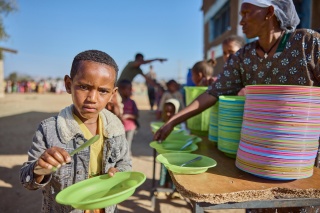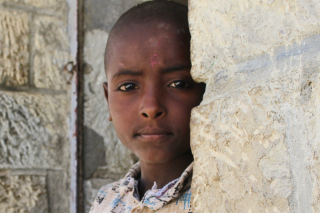
Child malnutrition rates soar in drought-ravaged Tigray
Doctor Abraha is a paediatrician at Ayder Hospital – the largest in Tigray. He shares his concerns about the alarming increase in the number of children dying of malnutrition in his facility.
Watch our full interview with Doctor Abraha in the video below.
Doctor Abraha says: “We are seeing three times as many cases of malnutrition as normal, and the mortality rate is five times higher.
“The number of children dying was quite stable for the last 13 years, but since the war, it’s doubled. Previous deaths were generally linked to other health conditions, but now it’s a singular cause, it’s malnutrition on its own.”
The drastic need for intervention in Tigray to save lives, both young and old, is clear. Almost 2,000 hunger-suspected deaths have been identified in Tigray since the end of the two-year civil war in November 2022. And right now, 4.5 million people need emergency food aid.
Driving Tigray’s food insecurity is people’s inability to grow crops for income and sustenance. Around 80% of Tigrayans rely of agriculture as a source of food and income, and last year, around two-thirds of the region’s planned harvest failed. Farmers and smallholders were already operating at a loss as just under half of the land was even viable for planting. With little to no reliable food source at home, more and more children are falling victim to preventable conditions such as malnutrition.

Dr Abraha continues: “In this Paediatric Stabalisation Centre, we treat the children under five who are severely malnourished. It’s the most severe cases, but we can’t accommodate all the children who need help.
“They are discharged when they begin to improve and we see that they can feed or chew for example, but we’re often seeing children coming back again, because their families just don’t have enough to feed them. When malnutrition reoccurs, the mortality rate goes up.”
Mary’s Meals is the largest provider of school meals in the region, serving meals to more than 45,000 children every school day. But as only 40% of the estimated 2.4 million children have been able to continue with their education, and drought threatens “mass dropouts” for a further quarter of a million children, Dr Abraha is clear about the weight of school feeding amid a hunger and education crisis.
He concludes: “When I started school, I was the recipient of school meals. I think a school feeding programme is very important, the future depends on it.”

